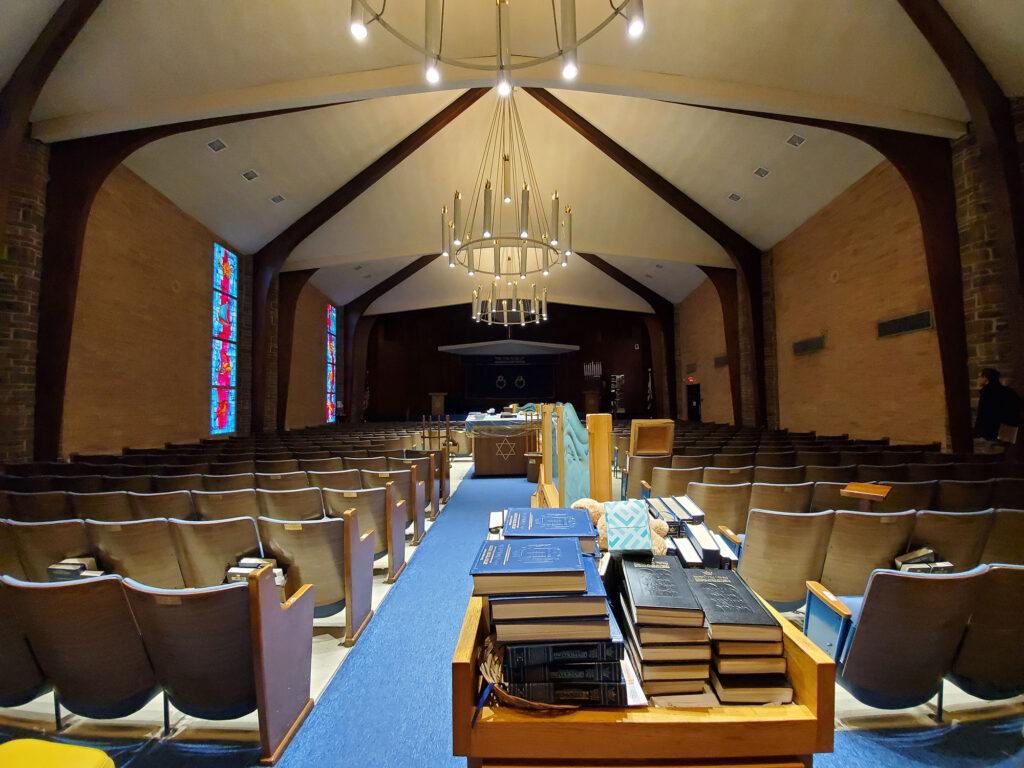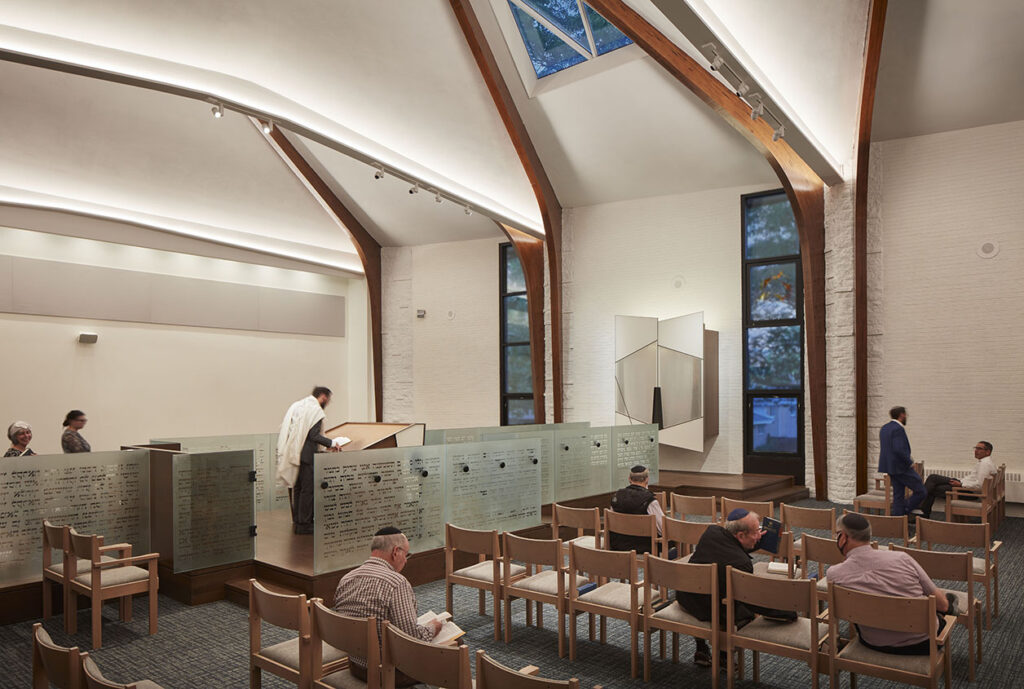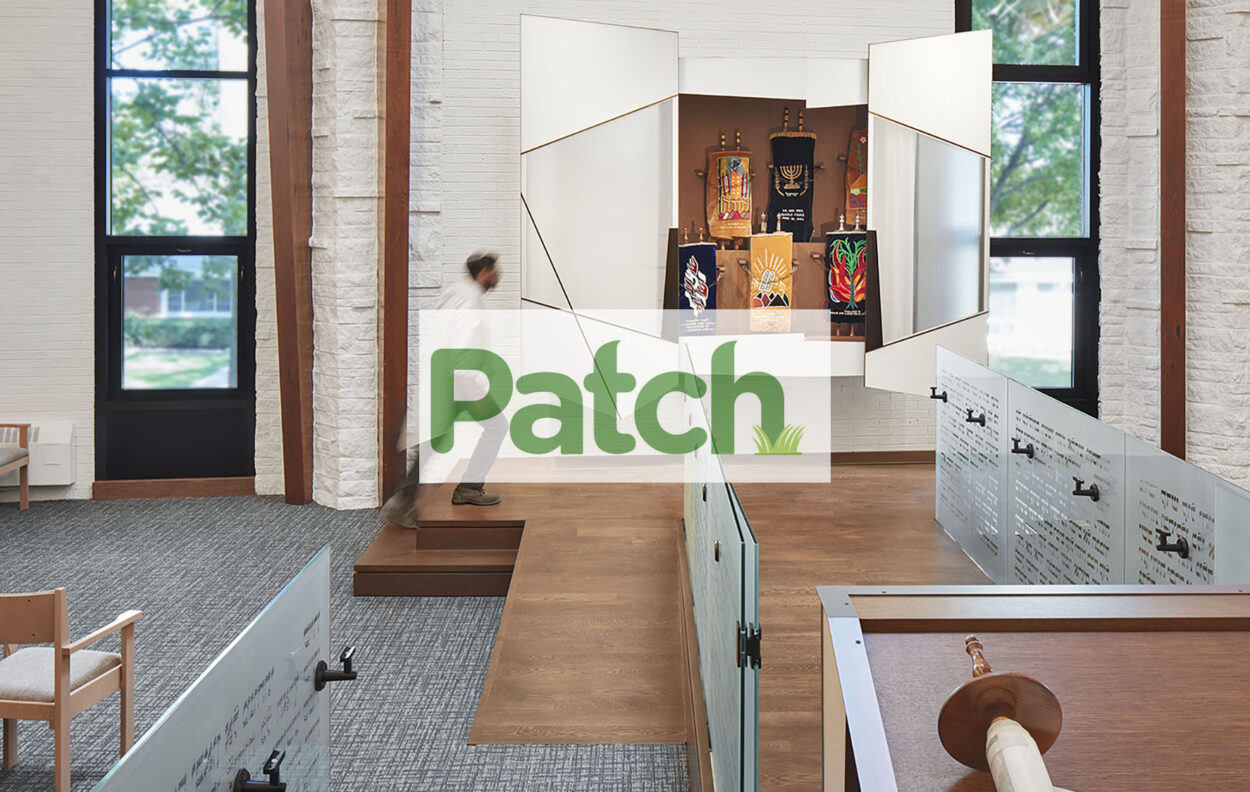Published: Patch
Skokie Valley Agudath Jacob made a major pivot a decade ago. With new renovations, the synagogue’s architecture has turned along with it. A free, public dedication ceremony for the newly renovated sanctuary at Skokie Valley Agudath Jacob, 8825 E. Prairie Road, Skokie, is scheduled for May 21.
SKOKIE, IL — The renovation of a local synagogue reflects its decade-long transformation into a more inclusive Orthodox Jewish congregation.
Work on the reconfiguration of Skokie Valley Agudath‘s sanctuary at 8825 E. Prairie Road got underway in summer 2020 and is nearing completion this month.
Rabbi Ari Hart said the renovation of the 60-year-old building was led by members of the congregation.
“It was a lay-led process,” Hart told Patch. “It was a committee of incredibly dedicated volunteers who spent countless hours coordinating and responding to all the craziness of COVID, and supply chains and working with the contractors and the architects.”
Architect Esther Sperber, founder of Studio ST Architects, transformed what was a long, dark room with fixed seats, dim lighting and poor acoustics.

Sperber added a large skylight in the center of the room, replacing vertical windows and installing new LED lights to illuminate the roof.
And a large stage that took up a quarter of what was a 3,500-square-foot sanctuary was converted into a coat room and new bathrooms.
“Our vision was to create a light-filled space with fresh air and crisp sound,” Sperber said last month in a summary of the project.
“We wanted an uplifting room that would support the prayer services,” she said, “a room in which an individual could experience a contemplative spiritual connection to the divine while also feeling the embrace and support of the community.”
Sperber, who specializes in synagogue redesign, founded her New York-based architecture firm after working with renowned architect I.M. Pei for more than half a decade.
“She’s someone who comes from a similar religious world that we inhabit, so that’s kind of cool. She’s an architect who’s not only Jewish but from the kind of progressive Orthodox world,” Hart said.
“What’s great about Esther, she’s an excellent architect, and also a real thinker and someone who thinks a lot about values,” he told Patch. “And it was really powerful to work with an architect who has these Torah values and these Jewish values front of mind as she was designing.”
The rabbi said the renovations are part of the ongoing evolution of the congregation, which was founded in 1957 as Skokie Valley Traditional Synagogue. It merged with Congregation Agudath Jacob in 1995 and with Bnai Jacob Synagogue in 1998.
But a few years later, the congregation had fallen on hard times financially, with its membership dwindling to 130 people — with an average age of 75.
“If it had continued in the same trajectory it was going in the early 2000s, it probably would have closed,” Hart said. “They would have closed, they couldn’t pay bills and sold the building. But there was a group of leaders who decided to pivot towards this kind of progressive but orthodox, this traditional but open model.”
The new model scrapped mixed-gender seating but incorporated female clergy, more inclusive attitudes toward LGBTQ people and an increased emphasis on relationships with the wider Jewish community, other faith communities and the secular world at large.
Since Hart was hired in 2017, the congregation has grown to about 325 households, with 250 of those added in the last decade, the rabbi said. And with time, it became clear that the sanctuary needed an update.
“Everybody knew we needed to do it,” Hart said.
“There were values that we wanted to express that weren’t reflected in the old architecture,” he explained.
During the first wave of the coronavirus pandemic in Illinois, members of the congregation were in the design stage of the project when they realized they would not be back in the room for a while.
“A few visionary members of the congregation realized that the pandemic offered them a unique opportunity to transform the building while use was low,” Sperber said. “I recall feeling deeply moved when I received the call informing me that the committee decided to proceed with the design we presented, demonstrating a commitment to communal prayer and a shared physical space.”

For one thing, the focus of prayer was shifted from the south to the east, with the movable bimah, or alter, turned about 90 degrees in order to face toward Jerusalem, as dictated by Jewish religious law.
Movable seats allow worshipers to sit closer to the bimah, and custom glass partition panels now separate the men’s and women’s sections of the sanctuary.
The increased exterior light is also in line with precepts of Jewish law, Hart said.
“In Jewish law, it says you have to have windows in the place of prayer — windows are required,” he said. “Because you need to be able to see the world and also the world needs to be able to see you. There needs to be a relationship between what we do when we pray and what we do outside.”
The entire community is invited to the dedication of the new space from 3 to 5 p.m. on May 21. Local public officials, dignitaries, religious leaders and other community members are expected to attend.
A brief program in the renovated sanctuary will be followed by sushi, sweets, music and other festivities in the social hall.
Hart said the turning of the sanctuary parallels the congregation’s change of direction.
“It was going one way, we’re still the same synagogue, but we made a turn, we made a pivot,” the rabbi said.
“And we pivoted the direction of the community, we pivoted the direction of the sanctuary and we’re going in a good direction,” he added. “It’s a bright future, we’ve got a long of young people and it’s an exciting time.

